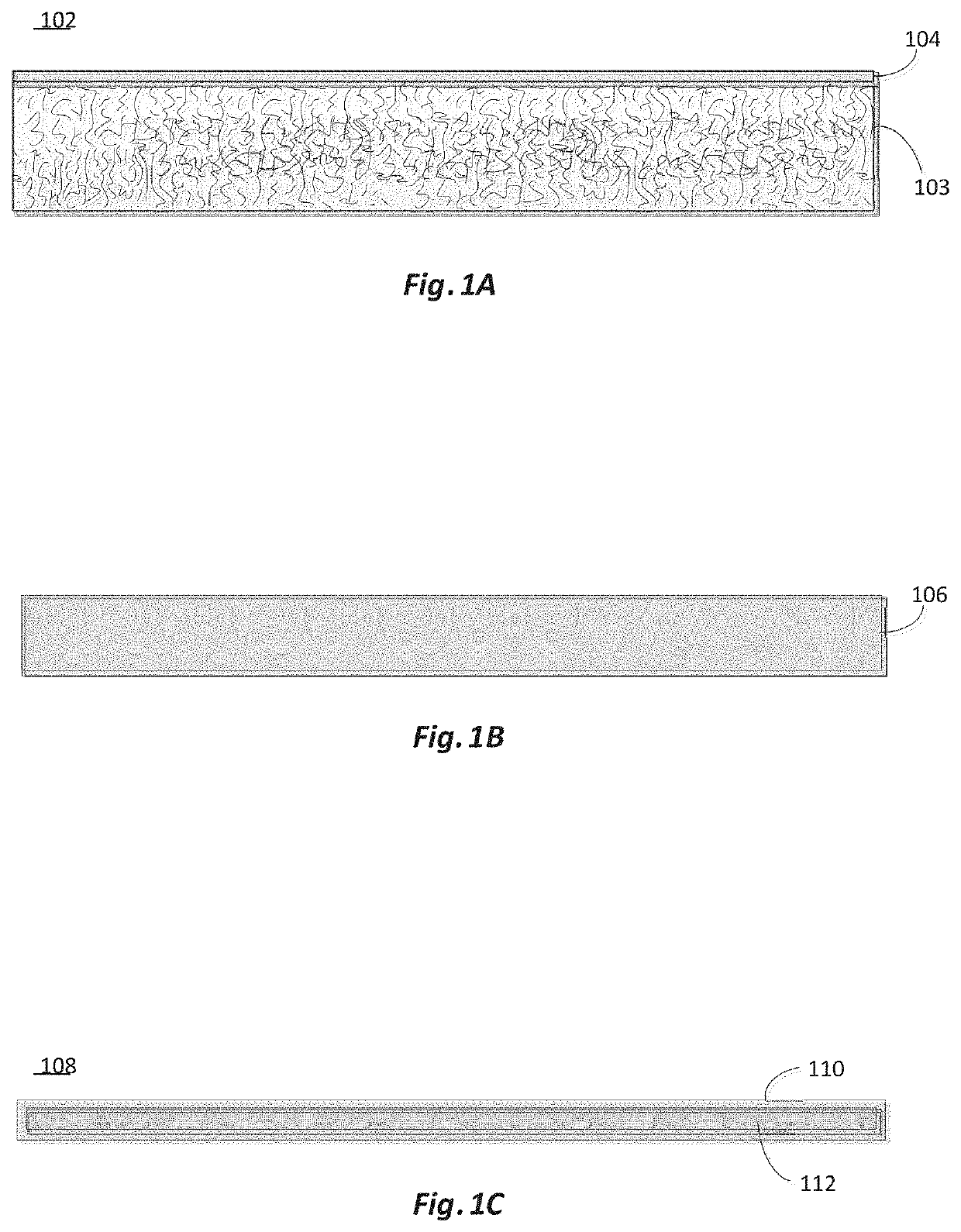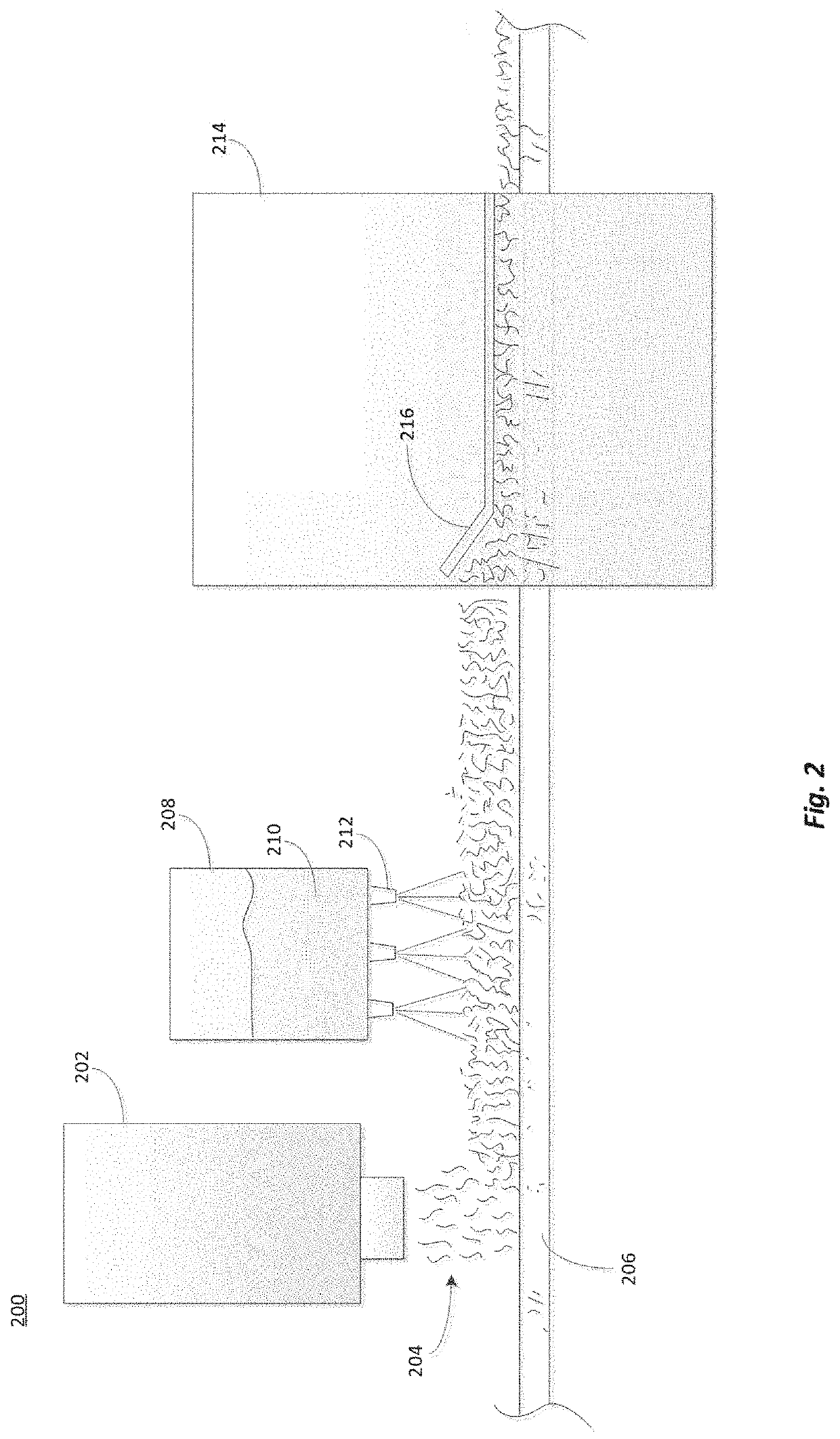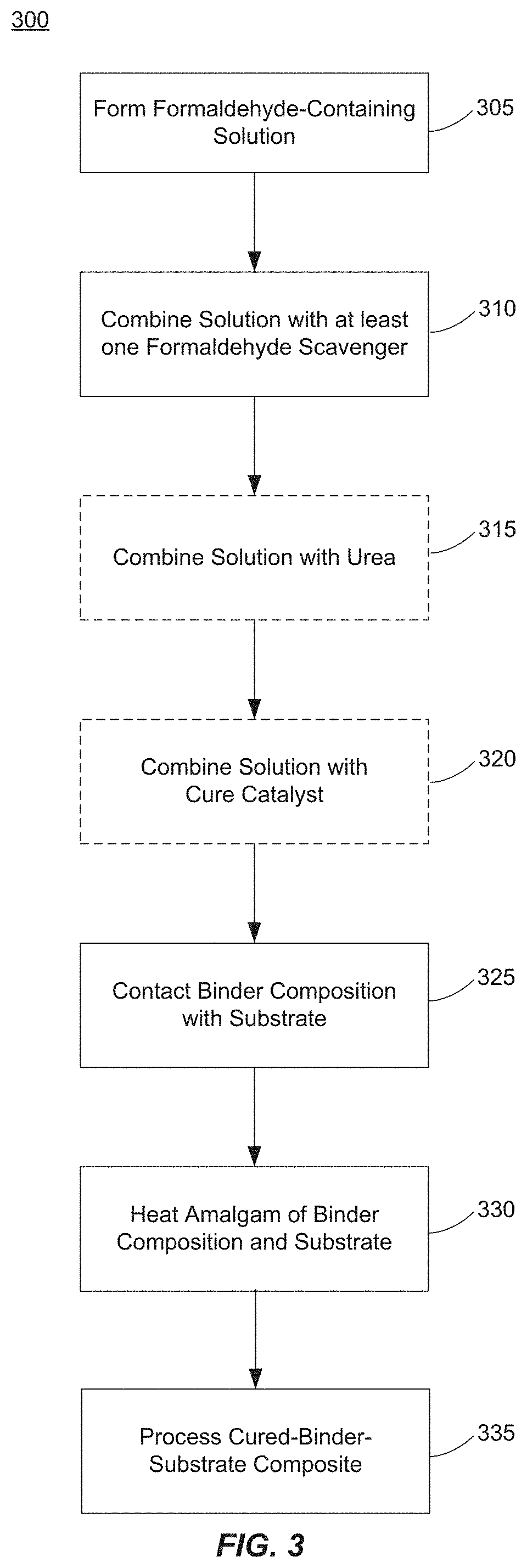Formaldehyde-containing products with reduced formaldehyde emissions
a technology of formaldehyde and products, applied in the field of composite products, to achieve the effect of reducing formaldehyde emissions and improving the cure kinetics of the binder composition
- Summary
- Abstract
- Description
- Claims
- Application Information
AI Technical Summary
Benefits of technology
Problems solved by technology
Method used
Image
Examples
Embodiment Construction
[0022]Formaldehyde-containing binder compositions are used to make a variety of composite materials that include the cured formaldehyde binder and a reinforcement material such as glass fibers. Examples of these composite materials include formaldehyde-binder-containing fiberglass products for thermal insulation, facers, and reinforcement scrims, among other uses. Among other benefits, many formaldehyde-containing binders such as phenol-formaldehyde binders, urea-formaldehyde binders, phenol-urea-formaldehyde binders, and melamine-formaldehyde binders, have good mechanical properties and exceptional thermal stability. Their thermal stability makes them well suited in fiberglass insulation products placed in high-temperature environments like around hot pipes and ducts, and incorporated into articles designed for heating such as ovens and dishwashers, among other high-temperature uses.
[0023]Unfortunately, many formaldehyde-containing binder compositions release free-formaldehyde whil...
PUM
 Login to View More
Login to View More Abstract
Description
Claims
Application Information
 Login to View More
Login to View More - R&D
- Intellectual Property
- Life Sciences
- Materials
- Tech Scout
- Unparalleled Data Quality
- Higher Quality Content
- 60% Fewer Hallucinations
Browse by: Latest US Patents, China's latest patents, Technical Efficacy Thesaurus, Application Domain, Technology Topic, Popular Technical Reports.
© 2025 PatSnap. All rights reserved.Legal|Privacy policy|Modern Slavery Act Transparency Statement|Sitemap|About US| Contact US: help@patsnap.com



